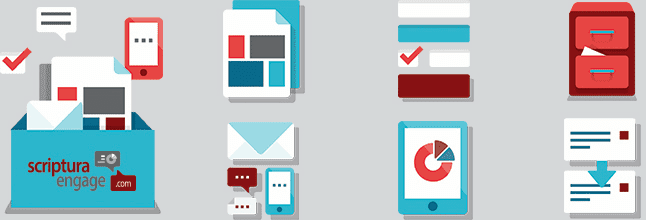Founded 1994 Type Privately held company | Number of employees 38 | |
 | ||
Profiles | ||
Inventive Designers is a privately owned software development company, based in Antwerp, Belgium. The company was founded in 1994 by Guy Dehond and Patrick Morren.
Contents
Guy Dehond was one of the beta testers of the AS/400 (codenamed "Silverlake") at IBM. Dehond and Morren had worked with this system for years, and their first products were for the AS/400. Later they started to design products for cross-platform environments. Today, the company specializes in software solutions for customer communications management in the public, financial, telecommunications, utility, insurance and healthcare industry, in over 30 countries.
In 2010 the company received a CIOnet Innovation Award
The company participates in the AFP Consortium and the World Wide Web Consortium (W3C). At the W3C, Inventive Designers was active in the XSL Working Group, and Chief Technical Officer Klaas Bals was the editor of XSL Requirements 2.0 document. Currently, the company plays an active role in W3C's Forms Working Group.
At the end of 2012 the second generation took over the company: Guy Dehond handed over the company to his daughter Joke Dehond and his son-in-law Klaas Bals. They successfully retained the identity and the DNA of the company, but have put their own accents.
In April 2014 Scriptura Engage was named Gartner Cool Vendor 2014 in Printing and Imaging by Gartner.
On January 5, 2015 Joke Dehond was named ICT Woman of the Year 2015.
DTM for iSeries or DTM for AS/400
In 1995 IBM purchased Lotus Software for $3.5 billion, primarily to acquire Lotus Notes and to establish a presence in the increasingly important client–server computing segment, which was making host-based products like IBM's OfficeVision obsolete. Guy Dehond and Patrick Morren decided to provide a solution to these customers that had millions of archived and active documents in OfficeVision. In 2000 they released DTM for AS/400, a native System i (AS/400) Data/Text Merge solution. It includes 5250 or Word based editing, creating modifiable merged documents, producing SCS and AFP color print streams, 5250 or Word based Fill forms. It is based on XML technology and allows the import of existing OV/400 RFT/FFT documents. IBM discontinued support of OfficeVision as of October 6, 2003.
Scriptura Engage
Scriptura started in 2001 as one of the first software solution to actively use XSL-FO, which (at that time) was still a W3C recommendation and not a standard yet. The release of the Scriptura Designer in 2001 allowed its users to create XSL-FO templates, based on XML input data. Rather than having to write XSL-FO code, the Scriptura Designer was a WYSIWYG design tool that allowed users to design a template and export it as an XSL-FO template.
In 2003, the Scriptura Server was released and allowed use of XSL-FO templates from the Scriptura Designer as input format to create output in Portable Document Format (PDF). There were separate components for batch and online processing. At that time, Inventive Designers was invited by IBM's Watson Research Laboratories to join the W3C XSL Working Group. New output formats were added over the years, including AFP, PDF/A, TIFF, RTF, PostScript and PCL. In 2005, Scriptura E-Forms was released, to allow users to design and process electronic forms, based on W3C's XForms standard.
Scriptura is based on the separation of content and layout, and the templates that are created with the Scriptura Designer were independent of the final output format. It was the Scriptura Server that did the transformation from XSL-FO into a final output format. That way, a single template could be used for every output format. Support for multichannel output was implemented and customers started asking for post-processing operations like bundling, sorting and grouping. This resulted in the release of the Scriptura Bundler component (2005), which later evolved into the Scriptura PostProcessor (2007).
The PostProcessor was a Java API, so additional programming was needed to implement it. Also, there was a need for better pluggability and a need to cover the entire document process. And since Scriptura wanted to offer the opportunity to be used by non-IT users, a graphical interface was needed. In 2008, the Scriptura DocumentFlow was released, a graphical interface that enabled users to design the whole document process, from data retrieval to output delivery.
In October 2010 the newest version of Scriptura was released with a new name, Scriptura Engage, to reflect the new architecture and technical strategy, aimed at allowing organisations to engage their stakeholders with multichannel communication.
Scriptura Engage Interactive Document Assembly was released in 2013. Scriptura Engage Interactive Document Assembly offers interactive document composition and assembly, allowing users to interactively compose documents tailored to the customers needs.
With its new version 8.0, the Scriptura Engage platform includes a new component called Scriptura Engage Communication Center. The objective of the communication center is to act as a central communications hub for customer correspondence. It is a management platform for executing complex multichannel communication strategies in a standardized manner and can be configured, extended, or customized to meet strategic communication objectives of the organizations.
IntelliStamp
IntelliStamp was introduced by the company in 2009. It is a hybrid electronic signature product that is used to protect both electronic documents and their paper printouts. It is used by organizations and governments. The technology was one the short list of Logica's Global Innovation Venture Program in 2009 for Belgium, Netherlands, Luxemburg and Germany. IntelliStamp has received multiple awards since its first release.
Since 2013 IntelliStamp is offered as a cloud service on the IntelliStamp Center. This is done either directly or through your home provider, because the IntelliStamp Center is an independent, cross-sector initiative supported by the various partners in the ICT market.
In 2015 Inventive Designers sold the IntelliStamp software to Cipal. The sale only includes the technology behind IntelliStamp. With this sales Inventive Designers can now concentrate more on the international growth of its customer communications platform Scriptura Engage.
